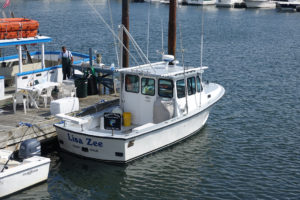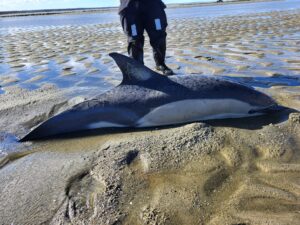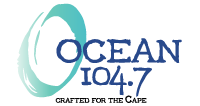 HYANNIS – According to recently released data from NOAA Fisheries, 2018 was a strong and successful year for U.S. fishermen and the seafood sector.
HYANNIS – According to recently released data from NOAA Fisheries, 2018 was a strong and successful year for U.S. fishermen and the seafood sector.
The data shows that in 2018, U.S. fisherman landed 9.4 billion pounds of fish valued at $5.6 billion at ports around the coast.
Those numbers are on par with recent years, which brings economic benefits up and down the seafood supply chain.
“The report show that shows that our nation’s fisheries and aquaculture production remain strong contributors to our economy,” said NOAA Chief Scientists, Cisco Werner.
“Specifically and overall last year, U.S. commercial fisherman landed 9.4 billion pounds of fish which translates to about $5.6 billion in the pockets of our fishermen. Compared to 2017 this is an increase of $150, or 2.8 percent.”
According to the “Fisheries of the United States” report, which is compiled by NOAA using data and analysis not immediately available at the same end of a fishing year, the highest value species groups across the country in 2018 included $684 million of lobster, $645 million of crab, $598 million of salmon, $541 million of scallops, and $496 million of shrimp.
Dutch Harbor in Alaska, and New Bedford in Massachusetts, continue to dominate the list of top ports driven by landings of Pollock for Alaska and top valued sea scallops in Massachusetts.
Recreational anglers also had a great year, with 8.5 million anglers taking 194 million saltwater fishing trips that reeled in top species like striped bass, dolphinfish, red snapper, yellowfin tuna, red drum, and spotted seatrout.
“New Bedford Massachusetts stayed strong claiming its 19th consecutive year of bringing in the highest valued catch,” continued Werner.
“That is due mostly to the very highly valued sea scallop fishery, in total the port saw 113 million pounds landed at $431 million.”
Although figures for U.S. marine and freshwater aquaculture production lag by a year, the report found that in 2017 these industries remained strong at $1.5 billion, with farmed oysters, clams, and salmon generating the highest values of marine aquaculture.
Seafood consumption was slightly higher in 2018 at 16.1 pounds, up 0.1 pounds from 2017.
This was the result of consumption increases in fresh and frozen seafood products.
The USDA’s Dietary Guidelines for Americans recommend that people eat two four-ounce servings of seafood each week, totaling 26 pounds per year per individual.
The report also outlined the U.S. seafood trade statistics.
Overall, the United States imported $22.4 billion worth of edible seafood products and exported $5.6 billion for a trade deficit of $16.8 billion.
For more information on the 2018 report, visit fisheries.noaa.gov.






















